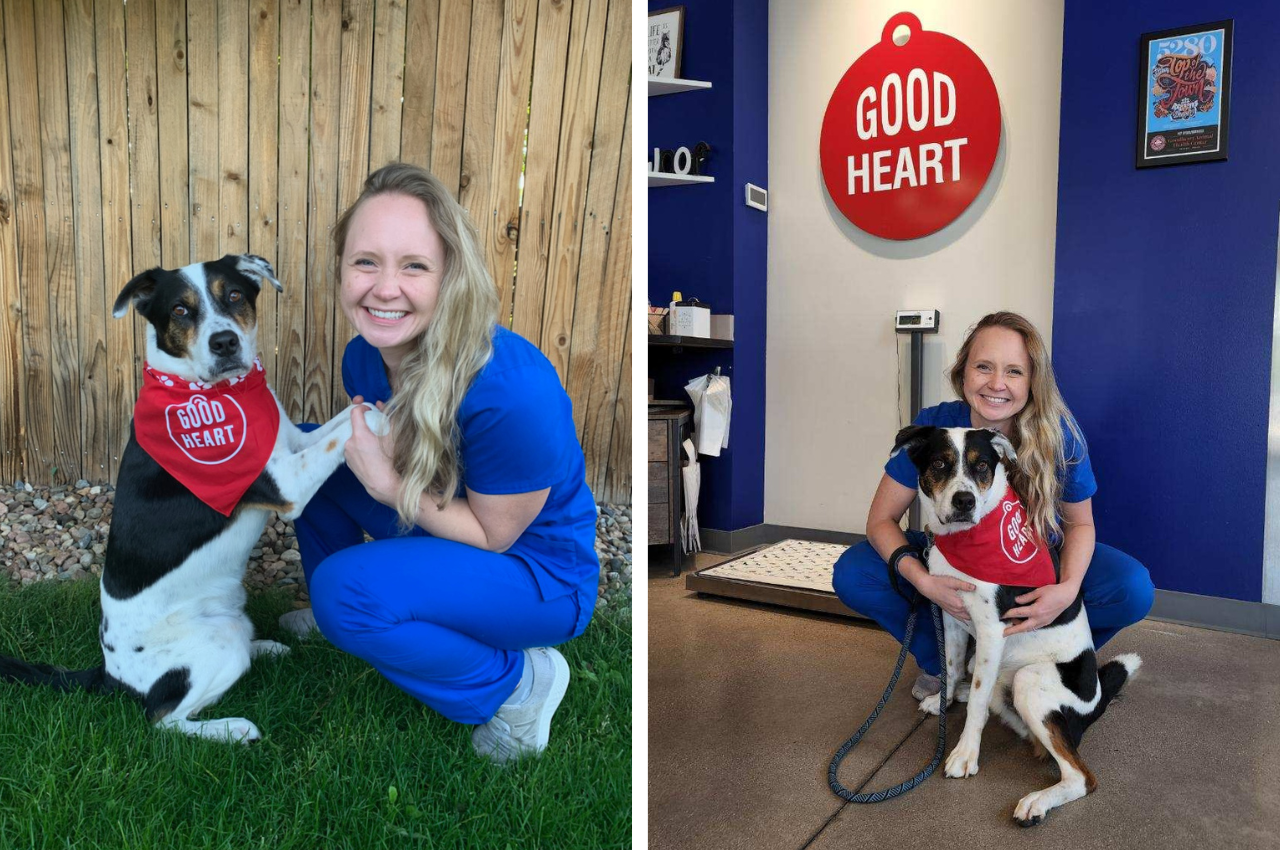2 min read

Odin’s allergies get in the way of having fun. Luckily, his mom is Hospital Manager Christine Dolce, and she helps him with regular allergy treatments. Pictured here: Odin and Christine at home and at work.
Allergies are no joke. And pets can’t tell us how they feel.
Yet, they’re manageable in most cases. Keep your eyes peeled for the symptoms to know if your pet is suffering.
Six signs your dog has an allergy:
#1: Frustrating itchiness
Itchiness is the most common sign your pet has allergies.
What’s happening: your dog rolls in the grass, where he comes into contact with an allergen (cedar, pollen, etc.). His body releases a histamine, which can lead to red, itchy skin.
What you’ll notice: Your pet will scratch, dig, and lick their skin.
The skin gets irritated, which might lead to an infection. The infection causes more discomfort, triggering a frustrating itch-scratch cycle.
#2: Red, watery eyes
Dogs get red and watery eyes for lots of reasons. One cause is allergies.
#3: Regular ear infections
Does your dog repeatedly experience red, itchy ears that have a distinct odor?
Bacteria or yeast-derived ear infections are another common sign and can cause significant discomfort for your pet.
#4: Red, raw paws
Many dogs with allergies experience itchy feet. They bite or lick their paws nonstop.
Rust-tinged paws are a sign your dog has been gnawing on their feet. This is because saliva turns reddish/brown when it’s exposed to the air.
#5: Hot spots
A hot spot is a red, raw, hairless area of infection that is itchy. Pets can’t help but bite or lick an itchy spot. Yet, it always leads to more skin damage.
Hot spots often seep a yellowish liquid that may form a crust over the raw skin and clump in the surrounding fur.
#6: Anal gland issues
And finally, anal glands.
Your pet’s anal glands are lined with skin tissue, which means they can also be affected by allergies.
Pets with inflamed anal glands may scoot across the floor. They might try to soothe the area under the tail by licking it or biting at it.
Without treatment, a pet’s anal glands may become infected and develop an abscess. This can rupture through the surrounding skin.
Cats suffer from allergies far less than dogs.
If they do have allergies, signs are similar to dogs: hair loss and chewing/biting on their skin or paws.
Pet allergies can be frustrating since triggers pop up all year long.
Help is available at Goodheart 24/7. New oral and injectable medicines can help your pet from suffering in silence.
Give us a call to discuss your pet’s allergies and how we can offer relief.
